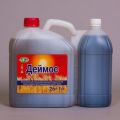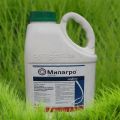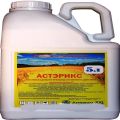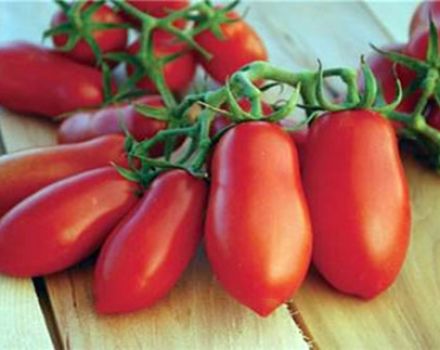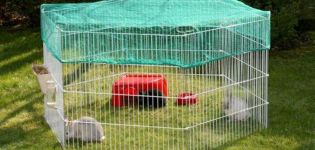Instructions for the use of Glyphor against weeds, description of the herbicide and consumption rates
The use of herbicides is justified by several arguments. There is no need for monotonous weeding of beds. The effect of the drug is longer than the mechanical destruction of unwanted guests. The tool is equally effective for both perennial and annual pests. Meet: detailed instructions for the doses and use of Glyphor from weeds.
Content
- 1 Composition, formulation and purpose of the herbicide Glyphor
- 2 Mechanism of action and speed of action
- 3 How long does it protect?
- 4 Advantages and disadvantages
- 5 Consumption measures for different plants
- 6 How to properly prepare and use a working solution
- 7 Precautions when working with the product
- 8 Phytotoxicity
- 9 Resistance
- 10 Compatibility with other pesticides
- 11 Storage warranty period
- 12 Analogs
Composition, formulation and purpose of the herbicide Glyphor
The drug contains glyphosate - a complex agent of universal action. It is produced in liquid form, it remains to dilute it with water in the required concentration.
Glyphor copes with a wide range of pests:
- Annuals.
- Perennial.
- Cereals.
- Dicotyledonous.
- Dandelions.
- Bindweed.
- Birch.
- Ostotom.
Using Glyphor, you can be sure that the weeds will leave the site for a long time.
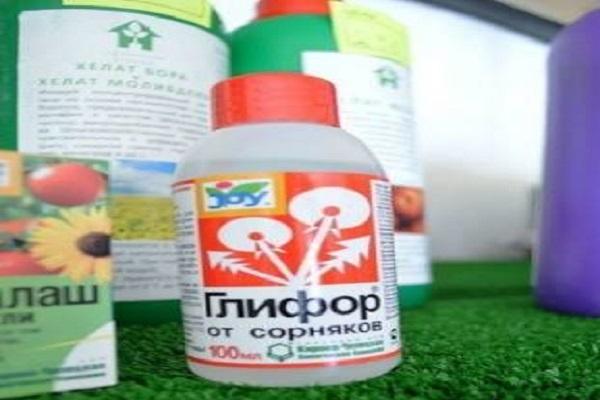
Mechanism of action and speed of action
The effect of Glyphor is based on the following factors: the drug interrupts the development of amino acids in harmful plants, while altering the permeability of membranes in cells. These circumstances have a depressing effect on the viability of weeds, they die before our eyes. As a rule, within 3-4 days for one-year-olds and 10 - for perennial pests, wilting of leaves occurs, drying of the aerial part.
Over time, the herbicide flows through the capillaries to the roots, finally destroying the weed.
How long does it protect?
On average, the drug retains a high concentration in plant tissues for almost 2 months, up to 50 days. All this time, there is an intensive pumping from the aboveground part of the weed to the underground. With standard processing, mechanical destruction, it is the roots hidden in the depths that pose the greatest danger. The herbicide fixes this problem once and for all.

Advantages and disadvantages
To make sure of the reliability, high efficiency of the tool, consider its advantages:
- Affects all parts of the plant, equally oppressing leaves, stems, roots.
- Recommended for a wide range of garden pests.
- Does not wash out of weed tissue even in the rain.
- Decomposition in the soil is fast, traces of the chemical do not penetrate into cultivated plants.
- Already 7 days after the mordant, sowing seeds, planting seedlings are allowed.
- By the nature of the action, it belongs to desiccants - substances that inhibit the underground part of the weed.
- The shelf life is 5 years.
Of the shortcomings, one can be distinguished, but serious: Glyphor is a herbicide, a poison that is dangerous to humans. Handling it requires taking precautions.

Consumption measures for different plants
Depending on the type of crop, the concentration of the plant treatment agent varies. Spring crops, potatoes, vegetables should be sprayed according to the following scheme: 80 milliliters of Glyphor for annuals and 100 in the case of perennial weeds. The dose of the drug is diluted in a bucket (10 liters) of water.
The optimal time for etching is autumn.
Orchards and vineyards are processed according to a similar principle: they are sprayed in the summer at the rate of 80/120 milliliters for annual / perennial pests. The same is done with plots that are planned to be prepared for sowing next year (or after harvest).
How to properly prepare and use a working solution
The mixture is prepared just before use. If there are cultivated plants near the treatment area, it is advisable to cover them with a film, isolate them for the duration of spraying. The required dose of the agent, depending on the etching scheme, is diluted in a bucket of water.
Spraying is carried out optimally quickly and reliably with a garden sprayer. Only green parts (stem, leaves) are processed; watering under the root is not necessary. The ready-made Glyphor solution is not intended for long-term storage, it should be worked out as soon as possible.
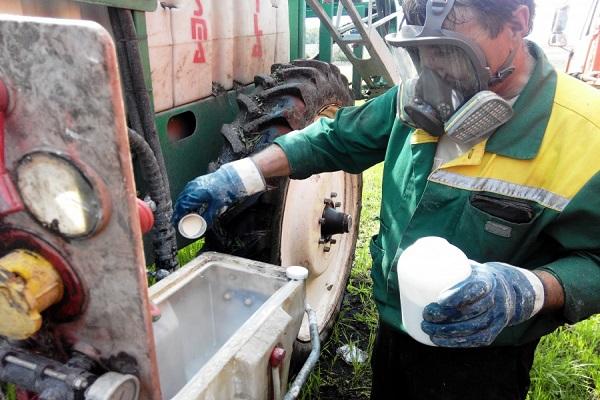
Precautions when working with the product
Glyphor belongs to the 3rd hazard class (moderate). Translated into Russian, this means that it is difficult to poison the drug, but it is not desirable to allow it to enter the organs of vision, esophagus, mucous membranes. In this case, it is necessary to immediately rinse the affected organ, the area with warm water.
If swallowed, induce vomiting or seek urgent medical attention. When spraying, use overalls, rubber gloves and a mask, as well as goggles.

Phytotoxicity
Glyphor has no pronounced toxicity in relation to garden crops, vegetables and cereals. Nevertheless, it is advisable to avoid getting the drug on the stems, fruits, foliage of cultivated plants.
Only the green mass of weeds is subject to processing, and this should be the focus.
Resistance
Lack of resistance, addiction is an important advantage of the drug. You can treat weeds with it many times, each time the substance will have a depressing effect on the tops and roots, killing harmful plants.
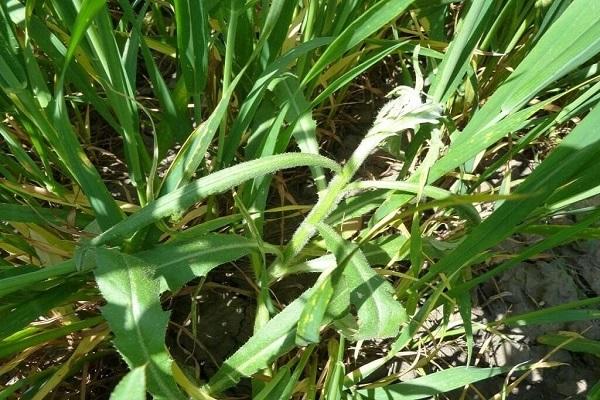
Compatibility with other pesticides
Glyphor combines well with 2,4-dichlorophenoxyacetic acid. Not recommended for combined use with highly alkaline substances. Before complex treatment, simultaneous or sequential use of the drug with other pesticides, it is necessary to study the instructions for use, make sure that such actions are permissible, provided by the manufacturer.
Storage warranty period
According to the manufacturer, the active ingredient, glyphosate, retains its properties for 5 years. This period is enough to destroy all weeds in the garden with the help of the drug.

Analogs
The closest analogs of Glyphor in terms of the mechanism of action include desiccants (preparations destroying the root system of the weed), as well as herbicides similar in composition.
There are a lot of them. These are Agrokiller, Glibest, Glider, Gliterr, Glyfogold, Glyfid, Glyphos and others.



